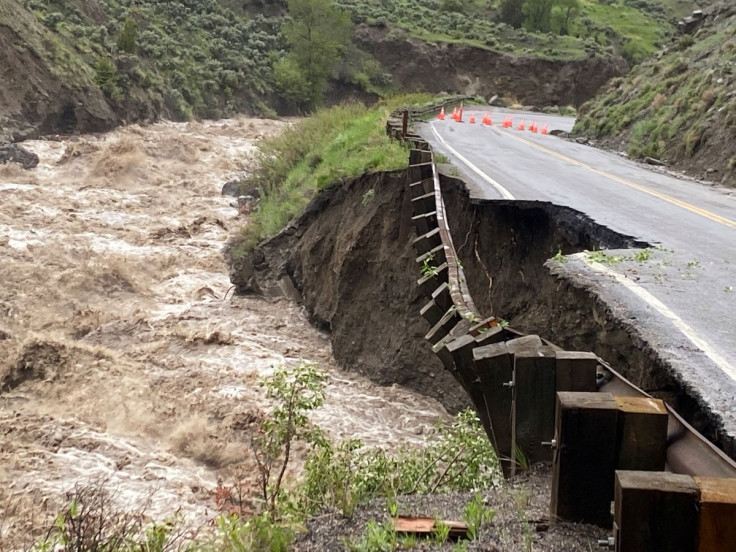Flooding, Mudslides Force Rare Closure Of Yellowstone National Park

Record flooding and rockslides following a burst of heavy rains prompted the rare closure on Monday of all five entrances to Yellowstone National Park at the start of the summer tourist season, the park superintendent said.
The entire park, spanning parts of Wyoming, Montana and Idaho, will remain closed to visitors, including those with lodging and camping reservations, at least through Wednesday, as officials assess damage to roads, bridges and other facilities.
All five park entrances were closed to inbound traffic for the first summer since a series of devastating wildfires in 1988. The National Park Service was working to reach visitors and staff remaining at various locations, especially in the hardest-hit northern flank of Yellowstone, officials said.
"Our first priority has been to evacuate the northern section of the park where we have multiple road and bridge failures, mudslides and other issues," the park superintendent, Cam Sholly, said in a statement.
The "gateway" community of Gardiner, Montana, just north of the park's northern boundary and home to many Yellowstone staff members, has been cut off due to a mudslide in the vicinity, according to the National Park Service.
Electric power was knocked out in multiple areas of the park, and preliminary assessments showed numerous sections of roads throughout Yellowstone either washed away or covered in rocks and mud, with a number of bridges also damaged, the park service said.
Various roads in the park's southern tier were on the verge of being flooded, according to the agency.
The flooding and slides were triggered by days of torrential showers in the park and steady rains across much of the wider Intermountain West following one of the region's wettest springs in many years. The park service characterized the levels of rainfall and flooding sweeping the park as unprecedented.
A sudden spike in summer temperatures during the past three days also has hastened melting and runoff of snow accumulated in the park's higher elevations from late-winter storms.
The heavy rains and rapid runoff of snow melt converged to create treacherous conditions in the park just two weeks after the traditional Memorial Day holiday weekend kickoff of the U.S. summer tourist season, which accounts of the bulk of Yellowstone's annual 4 million visitors.
© Copyright Thomson Reuters 2024. All rights reserved.




















